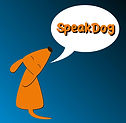HOWL-O-WEEN
- Emma Johnston
- Oct 13
- 4 min read
How Halloween Can Impact Dogs — and How to Help Them Cope

Halloween can be a lot of fun for us, costumes, decorations, visitors, and treats galore, but for our dogs, it can be confusing, overwhelming, and even frightening. From constant door knocks to strange outfits, spooky decorations, and eerie sounds, there’s a lot happening that can unsettle even the most confident canine.
Below, we’ll explore how Halloween might affect your dog and some simple, practical steps you can take to help them feel safe and supported during this busy time.
👻 Why Halloween Can Be Difficult for Dogs
1. Unfamiliar Visitors and Costumes: Dogs rely heavily on body language and scent to recognise people. Costumes, masks, and face paint can make even familiar humans look and smell different, which may trigger barking, fear, or avoidance, amongst other behaviours.
2. Frequent Door Knocks and Doorbell Rings: Trick-or-treaters mean constant noise and activity at the front door, a key stress point for many dogs. The repeated sound of the doorbell or knocking and people outside can quickly build anxiety and cause over-arousal.
3. Noisy, Flashy Decorations: Inflatables, flashing lights, and spooky sound effects can all create sensory overload, especially for dogs who are already sound-sensitive or easily startled.
4. Sweets and Chocolate: Halloween treats are tempting but dangerous. Chocolate, raisins, and xylitol (found in some sugar-free sweets) are toxic to dogs. It’s easy for an excited dog to grab something they shouldn’t — so keep all treats well out of reach!
With this in mind, if you want to be a part of the festivities then its important to think how we can best manage that without it having a huge impact on our dogs. If you are happier being left out of it, my suggestion would be a big sign explaining nervous dog please dont knock or ring bell.
🦴 Steps to Help Your Dog Cope This Halloween
1. Avoidance:Think carefully about when and where you walk your dog. As the nights draw in, it might be dark by the time you get home from work, but if your usual walk coincides with peak trick-or-treat time, it’s better to skip it and do some Free Work or enrichment at home instead.
If you are out and spot people in costumes heading your way, calmly turn around or cross the road rather than trying to wait it out. It’s far better to avoid a stressful encounter than risk your dog feeling frightened or overwhelmed.
2. Create a Safe Space:Set up a quiet area away from the front door with their bed, water, and favourite toys. Close curtains, play gentle music, and have the tv on, or use white noise to help muffle outside sounds.
If your dog chooses to hide somewhere else, let them. Avoid trying to coax or pull them out; they’ll come out when they’re ready.
3. Manage the Door Situation: If possible, keep your dog away from the front door during trick-or-treating hours. Consider greeting visitors outside or leaving a bowl of sweets with a friendly note to avoid constant doorbell ringing (although, admittedly, some children may still take them all!).
A simple sign such as “Please don’t knock, anxious dog resting” at your gate or front door can also help prevent unnecessary stress.
4. Feeding: If your dog struggles to eat when there’s noise or commotion outside, consider feeding them earlier in the day before things get busy. A full stomach and calm environment can help reduce anxiety later on.
5. Use Calming Routines: Offer enrichment activities or Free Work indoors with the curtains closed and soothing background sounds. Calming chews, snuffle mats, or scentwork games can help occupy your dog and promote relaxation.
6. Be Mindful of Walks: It might seem fun to include your dog in trick-or-treating with the family, but only do so if you’re confident they can handle the excitement and noise. Remember, a quiet or still dog isn’t always a calm one; sometimes “quiet” means they’re just trying to cope.
7.Costumes are for humans: As costumes can add an extra layer of stress and possible discomfort or cause irritation etc, I would recommend keeping the costumes for humans.
8. Speak to Your Vet if Needed: For dogs with severe anxiety, especially with fireworks season just around the corner, it’s worth discussing short-term medication or calming support options with your vet or reach out to an ethical professional. This can make a big difference in helping your dog feel more comfortable and secure.
🐾 Final Thoughts
Halloween can be a fun and festive time for us, but for many dogs, it’s filled with unfamiliar sights sounds and smells that can cause stress. With a bit of planning and awareness, you can help your dog feel safe, calm, and cared for.
The key is to be your dog’s advocate, minimise exposure to scary or unpredictable situations, think about a routine for that day that provides the most chance of safety, and provide them with a peaceful space to retreat to.
A little preparation goes a long way to ensuring everyone, both two, and four-legged ( or three) has a happy and stress-less Halloween! 🎃🐶


Comments